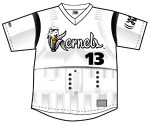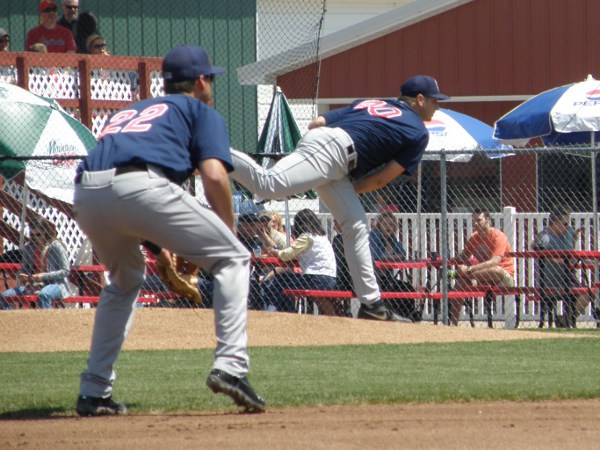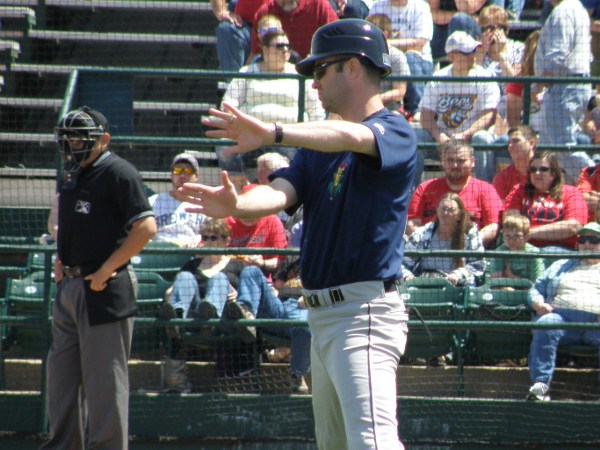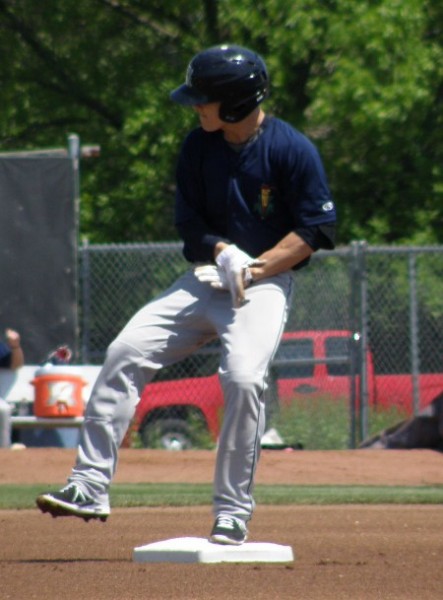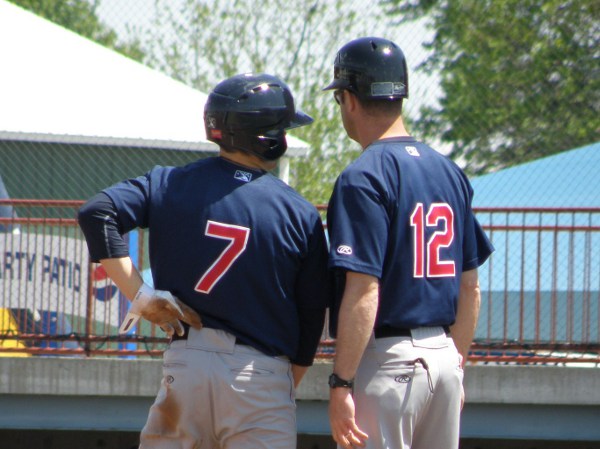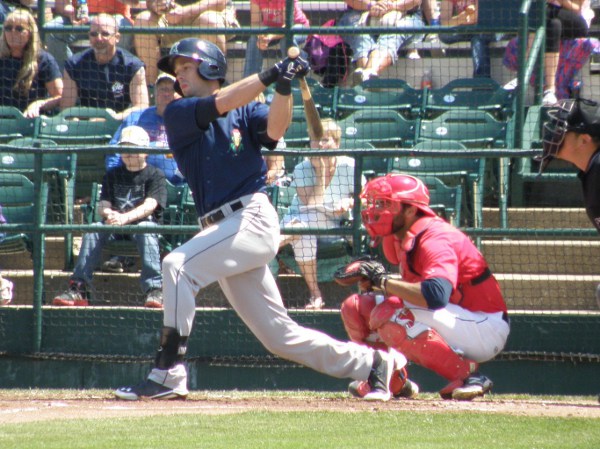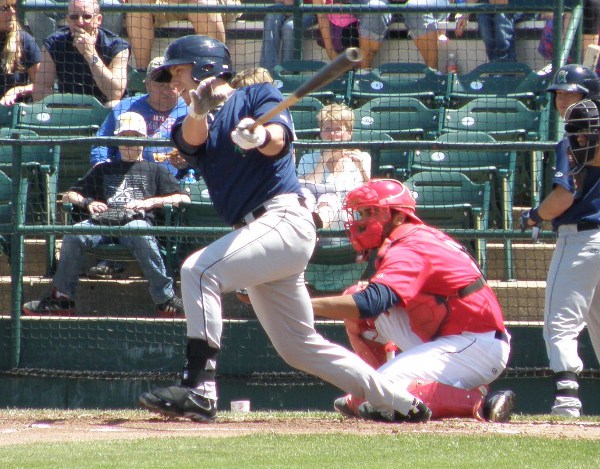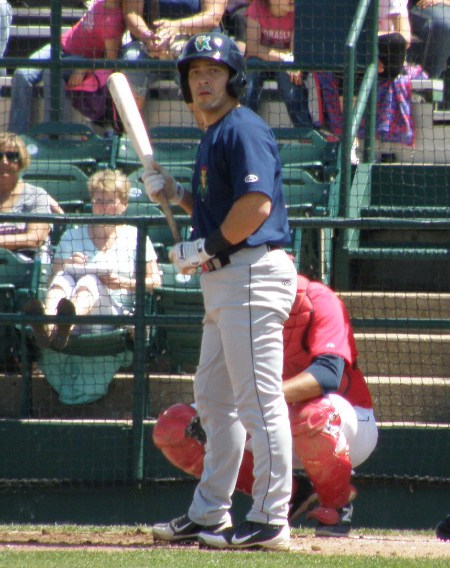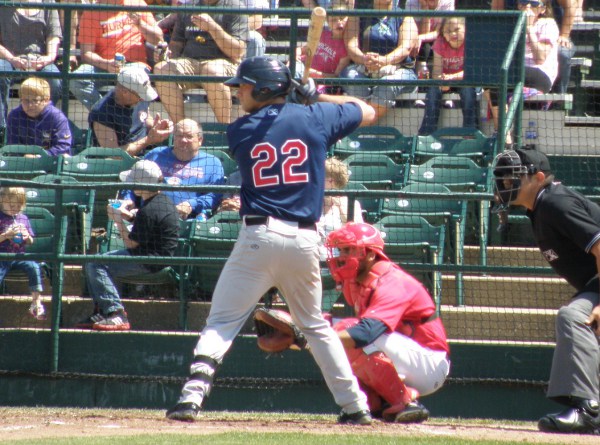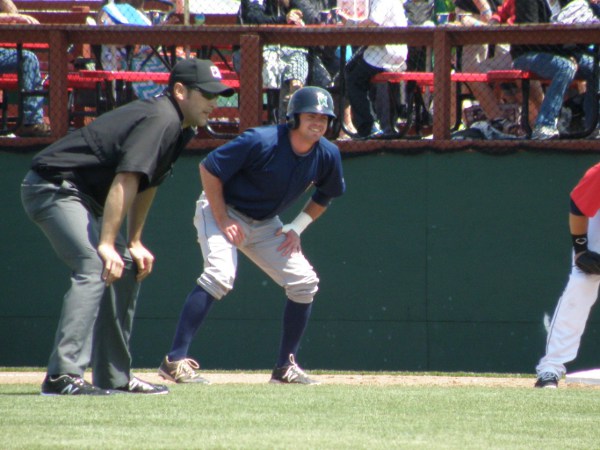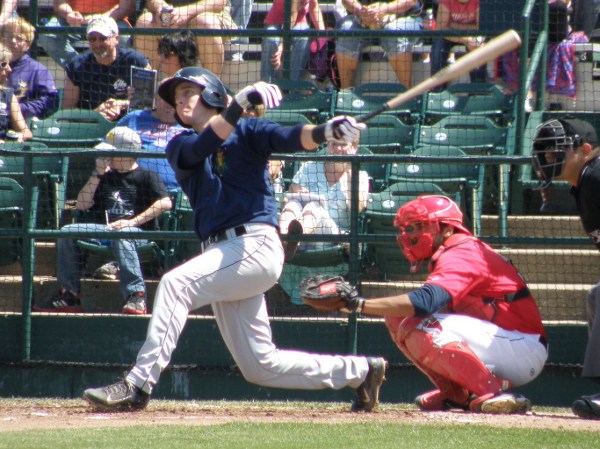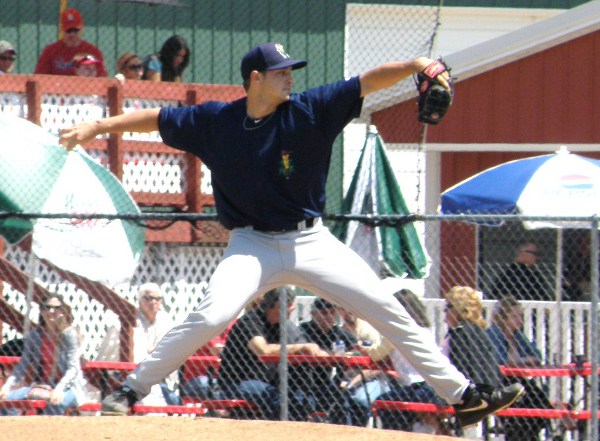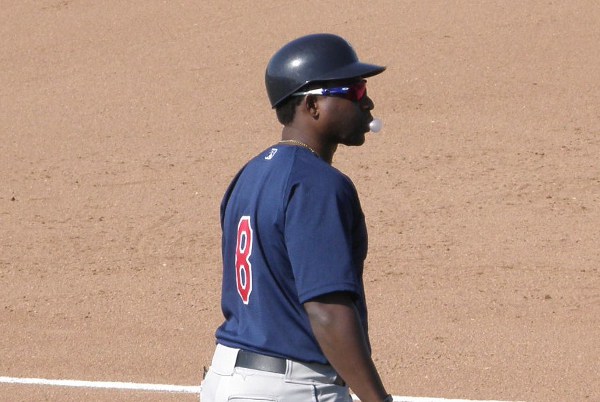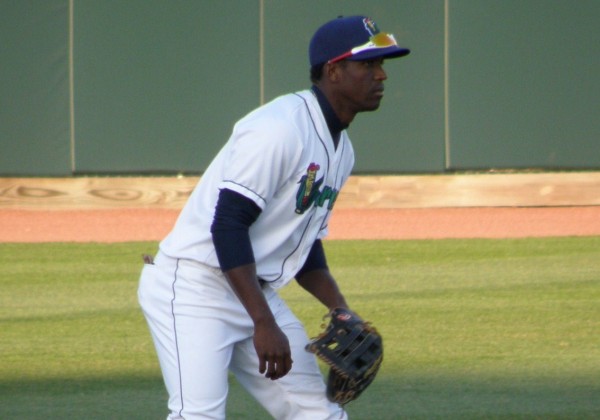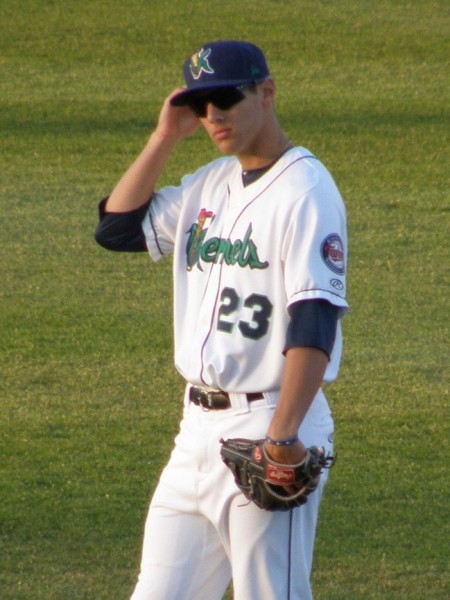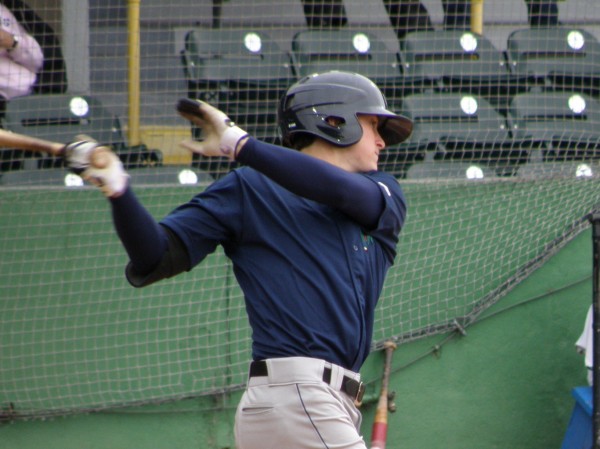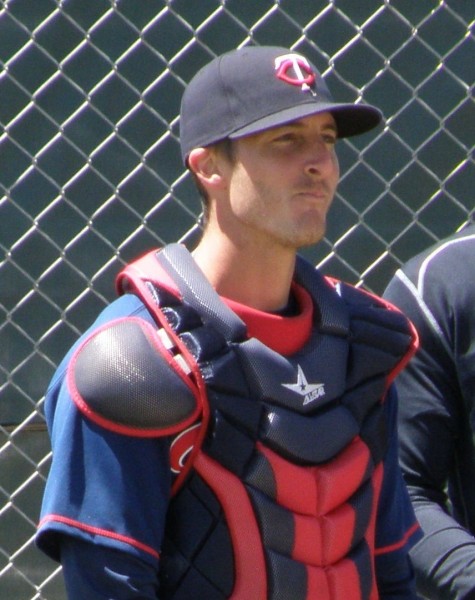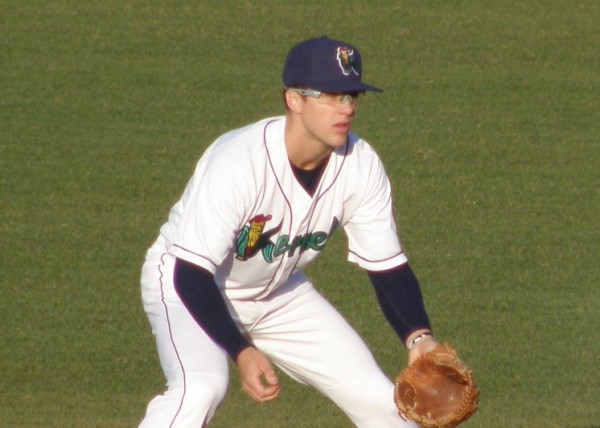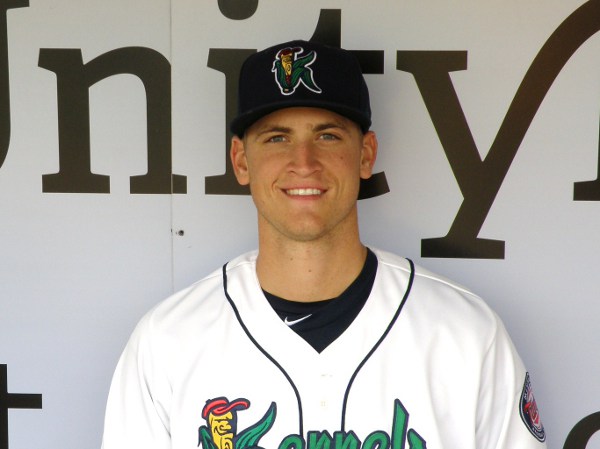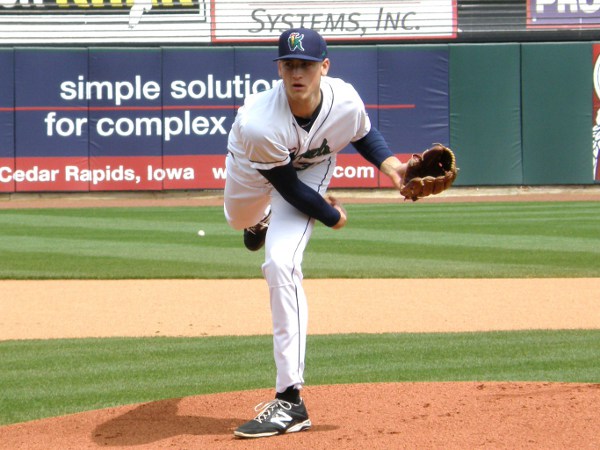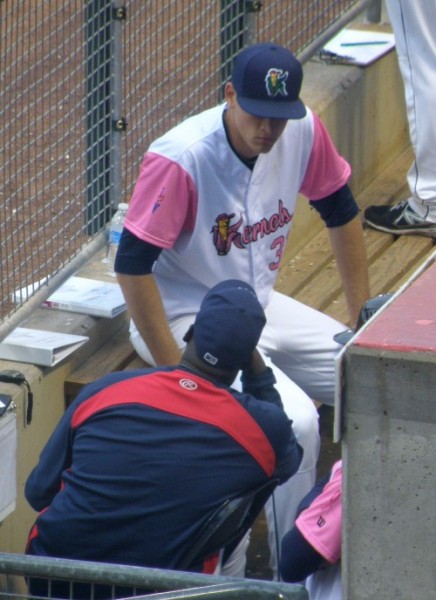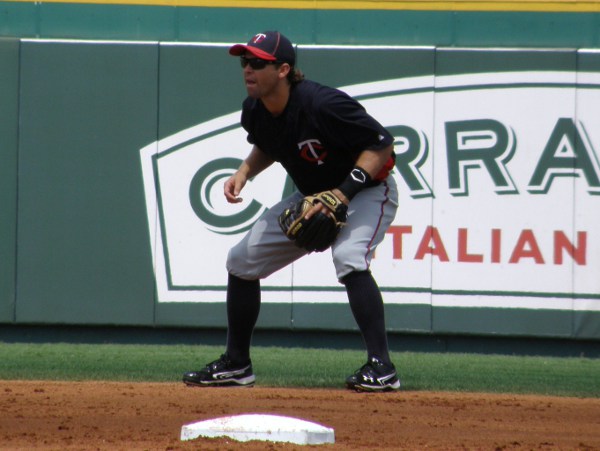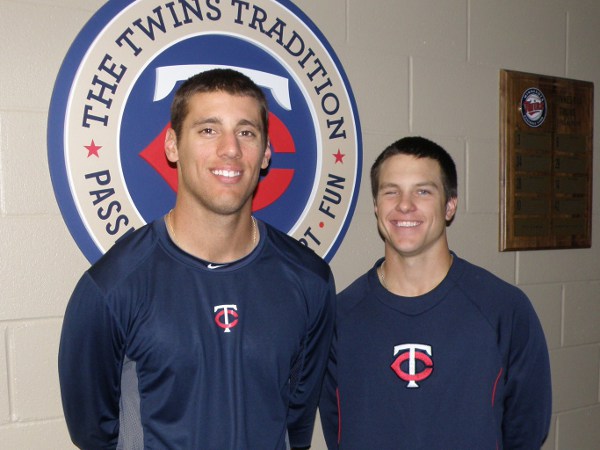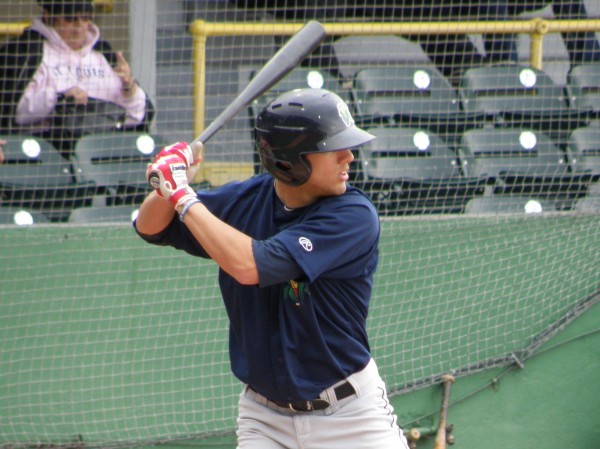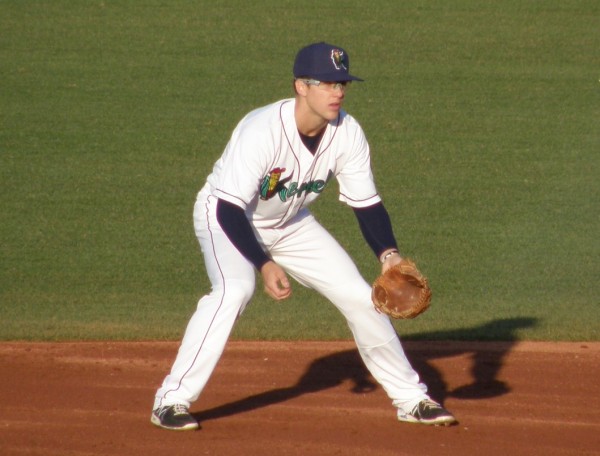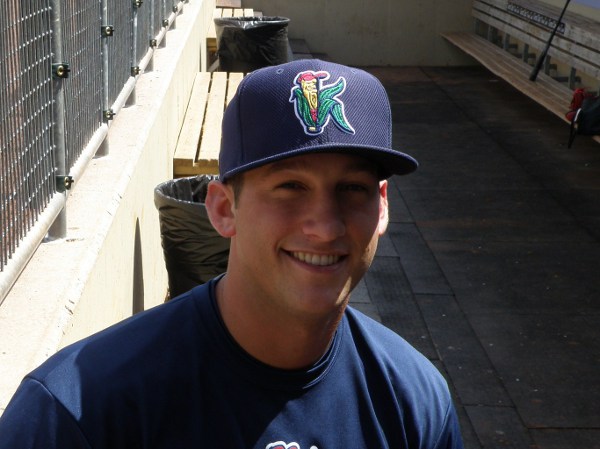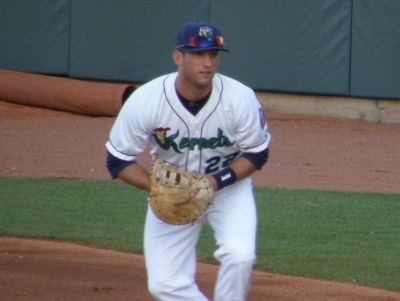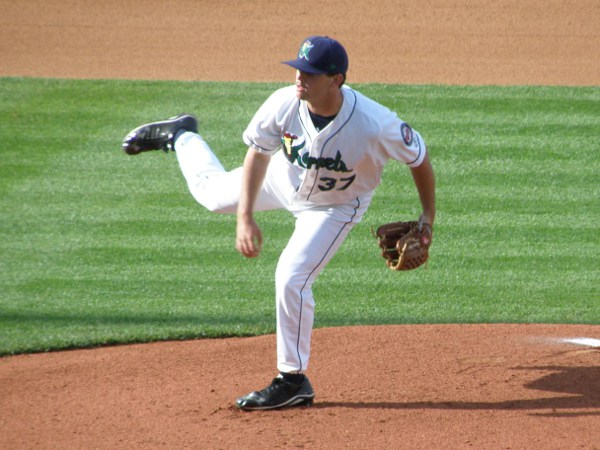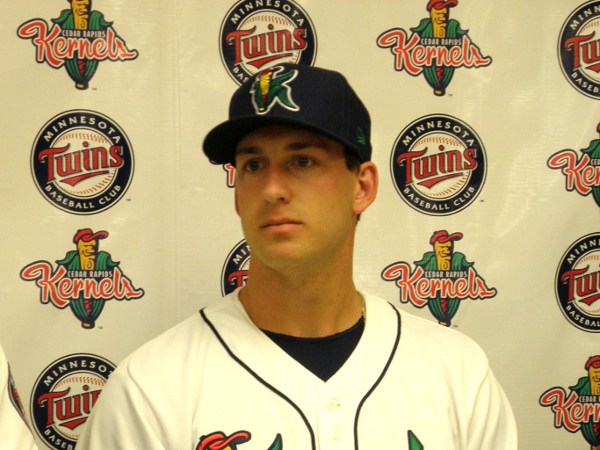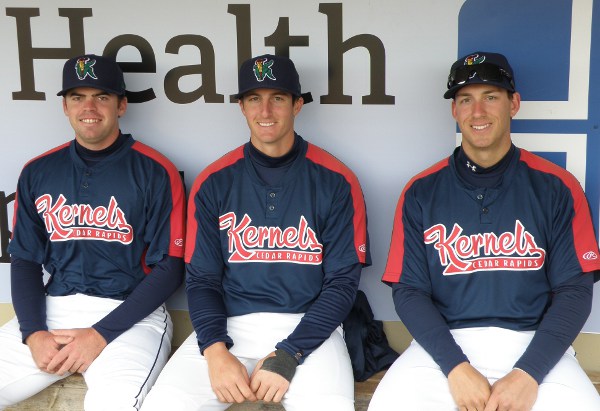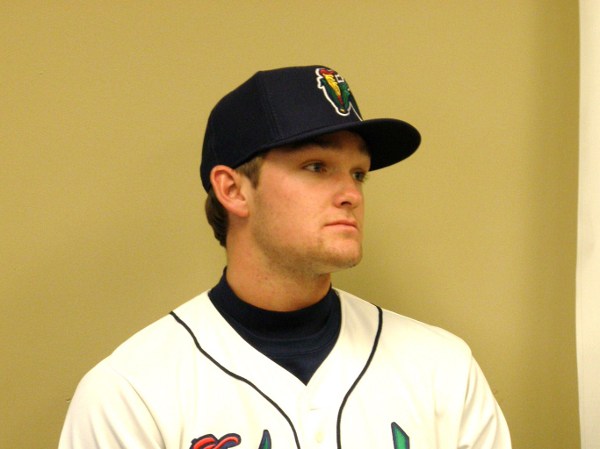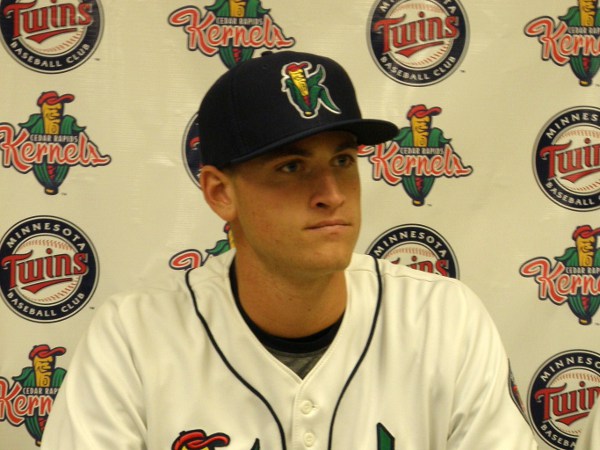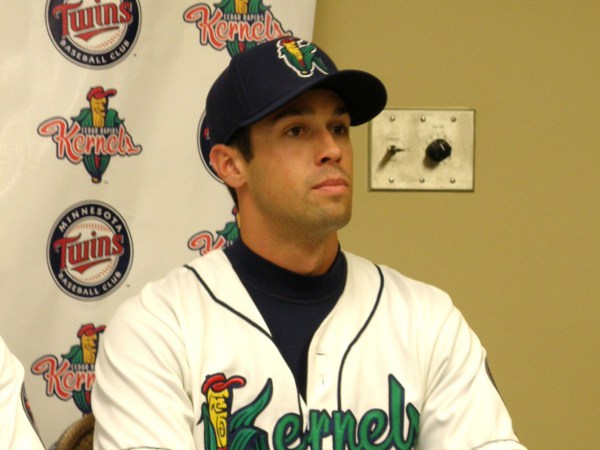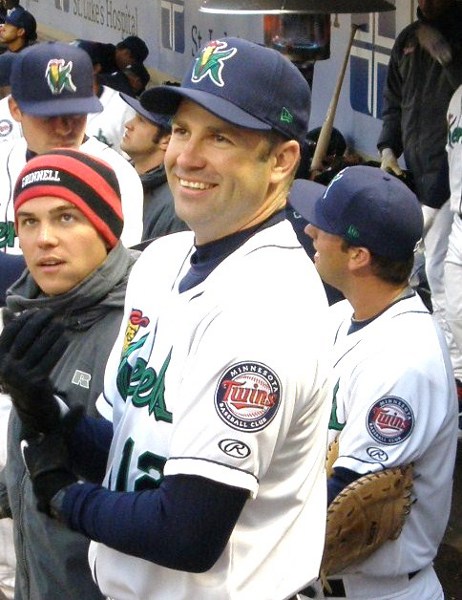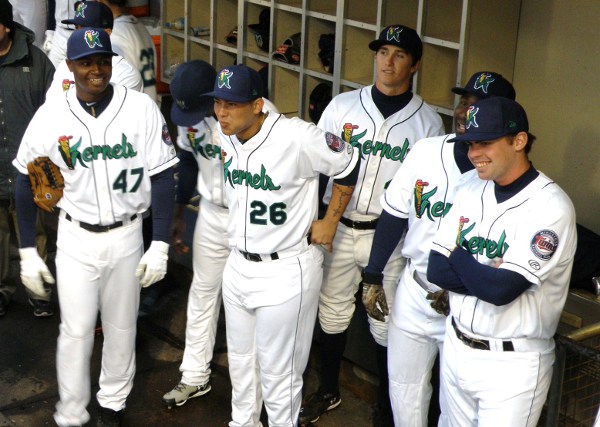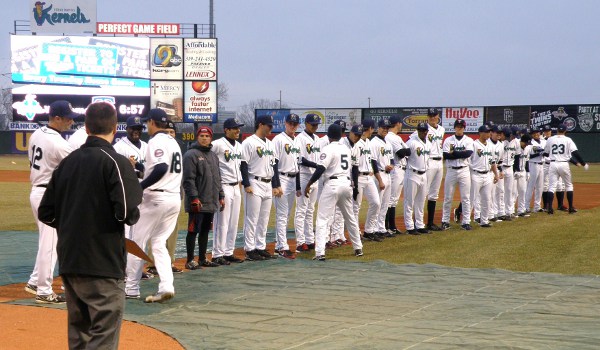The 2014 MLB First Year Amateur Player Draft is right around the corner and hundreds of high school and college ballplayers are counting the hours before the Houston Astros go on the clock with the first pick of the draft on Thursday, June 5.
One year ago, Kohl Stewart was an 18 year-old pitcher anxiously awaiting the draft. Today, Stewart, who was selected by the Minnesota Twins with the fourth overall pick of the first round, is a couple of months in to his first full year of professional baseball.

Stewart sat recently and reflected on the draft a year ago and his progress as a starting pitcher this season with the Cedar Rapids Kernels, the Twins’ Class A affiliate in the Midwest League.
“I think that this time last year, we had just lost in the state finals in baseball,” recalled Stewart. “Then I was graduating from school and the draft was coming up. I was spending hours with my agent talking about what I wanted to do. There were a million different scenarios playing over in my head. I remember thinking, ‘if this happens, if this guy goes here and if this guy goes here.’”
Those “scenarios” Stewart speaks of went beyond those of most of his peers. While all of the high school ballplayers likely to be selected near the top of the draft have the option of postponing their professional careers in favor of playing college baseball, Stewart had an additional option. He had a scholarship offer from Texas A&M football coach Kevin Sumlin to play quarterback for the Aggies.
Stewart and his agent certainly knew he’d be selected early on draft night. But that doesn’t mean he had made up his mind weeks before the draft that he’d be signing with whatever team chose him.
As draft day neared, however, things seemed to come more in to focus.
“I expected to go to A&M,” acknowledged Stewart. “A couple of days before the draft, I think, my agent I guess had kind of talked to some people and he kind of had an idea of what was going to happen and I even talked to Coach Sumlin a couple of days before it happened and he gave me his blessing. He wanted me to do what was best for me and that was another dynamic that I had to deal with, too. I kind of felt like I was letting him down. Having guys like that… he’s a really good coach for a reason. He had gone through that before. He definitely made the situation easier on me.”
Even having pretty much come to grips with the likelihood that he’d be signing a professional baseball contract rather than pursuing a major college football career didn’t make waiting any less stressful for Stewart.
“You kind of have that situation made up in your mind, but everything’s still got to happen. You’ve still got to sit there and the decision’s still got to be made,” said Stewart.
The anxiety of the wait didn’t mean Stewart and those closest to him didn’t enjoy the moment, however.
“I definitely enjoyed it. It was definitely a fun time for my family,” recalled Stewart. “I have a lot of friends that are really good baseball players that are playing in college right now. I got to experience what a lot of guys that I grew up playing ball with will probably be going through the same thing in a couple of years and to kind of share it with them was really special.
“But it was definitely really stressful. I would go to bed knowing I was going to have to make a really big choice and that was kind of hard. Every day it got closer to the draft, it was very apparent that I was going to have a very good opportunity with the Twins and I didn’t want to pass it up.”
Players do a lot of different things to relax on draft day. Some go hunting or fishing. Some play golf to take their minds off the draft and hope it passes the time more quickly.
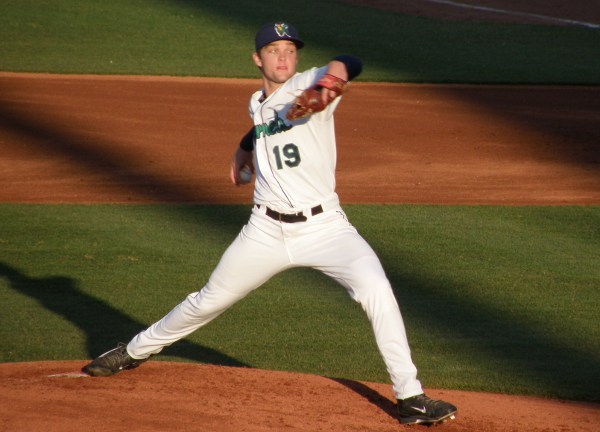
Stewart enjoys hunting and fishing in the offseason and also really enjoys golfing. But on draft day, he chose to pass the hours leading up to the draft with friends and family.
“I remember waking up. I slept in late,” Stewart recollected, smiling a bit. “I told myself I don’t want to get up and have to worry about it all day long. I wanted to sleep in as long as I could. I think that lasted until about 6:30 that morning.”
After breakfast, Stewart spent time with one of his Select Team coaches (“He was blowing it up, having a good time with it, kind of looking forward to the night”) and with an older brother. “We went to a place called Mel’s Diner. It’s a small little burger place. I went there, had a good meal with him. I remember he went and bought a bunch of champagne and put it in a cooler. Then we went back to my house and a bunch of people showed up and we turned on the TV.
“It was good. It was definitely a day I’ll never forget.”
Now, a year later, coming out of Memorial Day Weekend, Stewart has a 1-2 record and a 2.93 ERA as a member of the Kernels rotation. Stewart struggled in a loss to Beloit on Monday, but had given up just three earned runs in his previous five starts combined.
Nearly two months in to his first full season of pro ball, Stewart talked about what he has found to be the toughest things to adjust to in professional baseball life.
One, the adjustment to going to the ballpark every day either to play or work out between starts, is commonly mentioned by first-year pro ballplayers.
“I think that’s kind of a cliché that everybody says, ‘you’re not used to playing every day,’ and you hear that so much, but it’s true,” said Stewart. “I think that most of us guys that haven’t played a full year are still kind of getting used to this kind of animal of 140 games in a season.
“I think definitely that’s been the hardest thing for me. And then being away from my home. There’s some days I’ve just wanted to pick up my stuff and go home. I think every kid goes through that.
“I mean, I haven’t had a freshman year of college yet, so I didn’t get to experience that kind of homesick feeling first. But I’m learning. I’m learning how to be a professional, to come every day and figure out that I’ve got a job to do.”
The other challenging adjustment is probably a bit more unique to a pitcher in Stewart’s rather unique situation as a multi-sport star in high school.
“Going in to the season, I hadn’t thrown a lot of innings,” explained Stewart. “I threw in high school seasons but football kind of kept me from (throwing after the season).
“I think I underestimated the amount of throwing that I’m going to be doing. But I think that everybody probably goes through that, even coming out of college. I think the two bullpens between every start (a byproduct of the Kernels’ six-man rotation). Ive never been used to that. Or throwing a bullpen the second day after you pitch, that was a new animal for me.
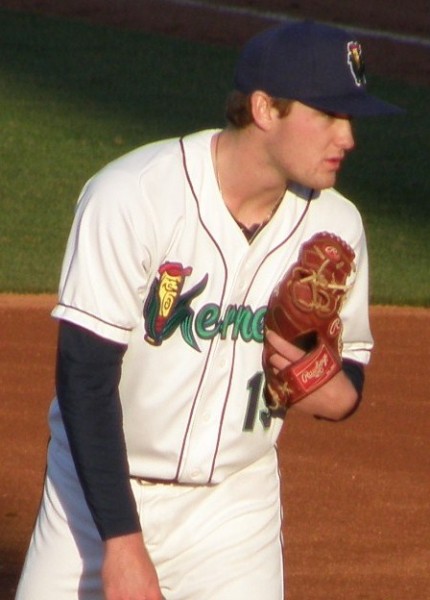
“I think that going in to a couple of starts, I felt like my arm was dead. I think that my arm was learning how to adjust to that feeling and I think that now my arm is starting to build on it. I think that now my arm is getting stronger and I’m kind of building back up to that strength that I was at.
“I think that those two things were probably the toughest for me, but I think that as time goes on, I’m getting more used to it every day, so I think I’m doing alright.”
As a result of Stewart’s limited work in high school, he and the Twins clearly had a plan for Stewart to follow heading in to the season. Not only pitch count limits and innings limits, which are commonplace for teenage pitching prospects, but also plans that focus on learning his craft.
Stewart explained the plan and assessed his progress so far.
“I’ve definitely had some good starts and I’ve had some bad starts. I think going in to the season, they hammered some things in to my head that they want me to get done, such as fast-ball command. They want me to pound the zone. They want me to be efficient. They want me to pitch. They don’t want me throwing a lot of pitches. There’s a pitch count on me for a reason. They want me to be able to go as deep as I can in to games without running my pitch count up.
“One thing that they really want me to do is fast ball command. They don’t want me to get behind in counts and then have to work from behind. So, I think that focusing on that stuff with Ivan (Kernels pitching coach Ivan Arteaga) and our catchers, I think that’s really helped me a lot.
“So I think that getting these innings in and learning to get the change-up over. I hadn’t thrown very many change-ups and my change-up now is something that I go to a lot against lefties. And really, just getting ground balls and keeping the ball out of the air. I think I lived up in the zone in high school because I could. I used to just throw the ball as hard as I could and that’s not really pitching. I’ve had to learn to command the zone and not feel like I have to overpower everybody.
“Going in to the season, I’m trying to build on every start, but I think that the approach that I have right now that Ivan and Jake (manager Jake Mauer) and I have gone over, I think that the plan we have going in to every start is pretty good. I think that I like where things are headed, but I think that I have a lot of work to do.”
College football season doesn’t start for a couple of months, but Texas A&M and every other major program recently wrapped up their spring practices. Did that give Stewart an itch to get on the practice field and throw the football around?
“I didn’t have time for it,” replied the pitcher. “I was so busy figuring out what I was doing and stuff, just trying to get better.”
Not that football is forever banished from his mind, of course.
“Whenever I watch them on TV, I always get that itch,” admitted Stewart, “but I think everybody kind of enjoys watching those things on TV. I think when I go to the games, I feel like I’m there kind of part of the team. There’s always going to be a part of me that’s there. There’s always going to be that closeness that I have with those guys that are in that class.
“But they know that I’m doing what I love and I wouldn’t rather be anywhere else.”
**********
The Kernels return home to Cedar Rapids after Tuesday’s matinee series finale in Beloit. They’ll be home for six games (three vs Wisconsin and three vs Burlington). Friday night, May 30, is another special jersey promotion. It’s “Star Wars” night with white/black “storm trooper” themed jerseys that will be auctioned off via silent auction with proceeds going to a charity. The first 1,000 fans through the gates Friday also get a free Star Wars t-shirt.

– JC
(All photos: JC/Knuckleballs; jersey/t-shirt images: Kernels.com)

